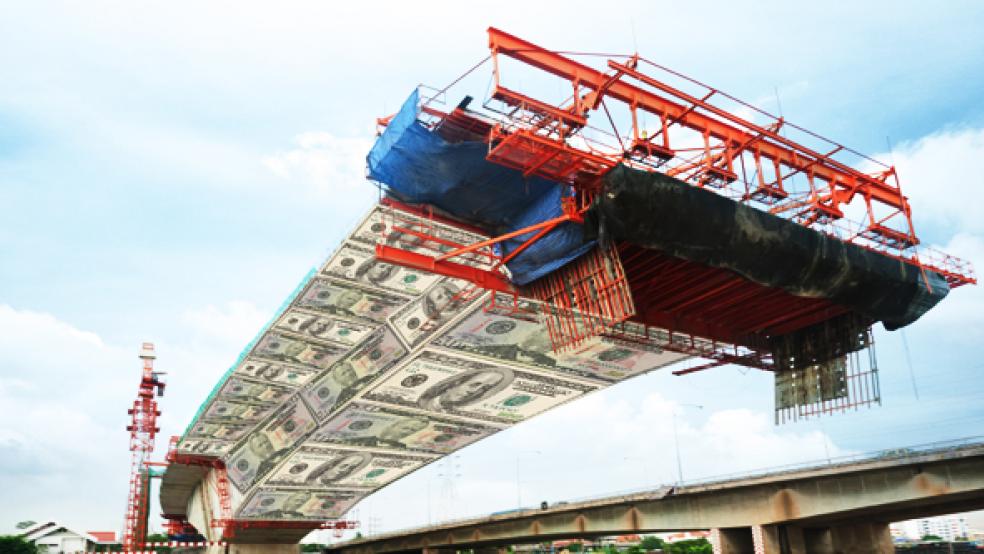Texas’ recent rejection of a bill enabling public-private partnerships was seen as a setback for President Trump’s proposal to pay for a new infrastructure program. But it merely exemplifies the long-running U.S. trend of private dollars staying on the sidelines instead of in play.
Public-private partnerships — or P3s, as they’re also called — bring together public agencies and private companies to launch critical improvements to transportation and energy systems. The United States has the largest potential market for P3s in the world. But for the time being, P3s are being implemented far more often in other countries, many of which now have infrastructure that has surpassed America’s in terms of overall quality.
Related: America's Civil Engineers Give US Infrastructure a D+
Between 1985 and 2011, according to research from the Brookings Institution, Europe and Asia leveraged P3s to the tune of $540 billion in infrastructure development. This was nearly eight times more P3 dollars than were allocated in the United States.
As lead equity or debt investors for projects such as Thameslink railway in the United Kingdom, Elazig Integrated Health Campus in Turkey and Bangalore Airport in India, we’ve had a firsthand view of some of these state-of-the-art P3 projects that have come to fruition in other regions of the world.
So what is holding back the U.S. P3 market?
Part of the challenge is that many lawmakers and local officials view P3s as too risky. The primary reason Texas lawmakers rejected P3s — that it would increase tolling to pay for highway projects — is representative of why many other states prohibit P3s, too. There’s concern that if a P3 were to fail the public sector would be on the hook, or, even in a successful agreement, that the public sector contribution will ultimately function like a new tax.
But P3 arrangements come in many forms, and can be structured to ensure that private sector profits do not burden the public with unnecessary expenses or fees. And there are still other ways that P3s can help maximize public infrastructure budgets: by funding smaller, less complex projects that yield cost savings over time. Research by Siemens found that projects providing improved traffic flows or low-energy street lights could help cities achieve 10 percent more investment capacity over a five-year period.
Related: The Smartest Way to Finally Fix America’s Crumbling Infrastructure
Furthermore, even when public funding is not available, there are still times when the private sector can fill the gap. In the energy sector in particular, public investment has been limited due to inconsistent federal policies. Even so, smart financing structures can enable the private and public sectors to achieve mutual wins. Companies win from a profitable investment; cities and governments, in turn, win from unlocking huge savings through transitioning to more efficient power systems.
The potential to boost the economy, improve our commutes, strengthen our power grid and create new jobs is all helping to fuel support, from the White House to Main Street. But to move forward, the United States, as it has many times in the past, will have to overcome infrastructure’s usual sticking point: the question of how to pay for it. As things stand, the available public expenditures are mainly succeeding at helping U.S. infrastructure crumble at a slower pace. But if we can overcome the skepticism around P3s at the local and state level, the private sector can play a much bigger role, and the United States can again have the resources to both repair and build in the 21st century.
Anthony Casciano is the Global CEO of Industry and Healthcare Finance for Siemens Financial Services.





